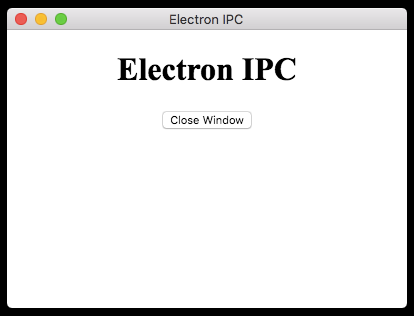這次來說明一下 Electron 的 IPC 機制
Electron 使用 Chromium multi-process 的機制,由 main process 來創建 application
renderer process 來負責繪製 web page,而 process 之間是無法直接溝通的
那如果想要 web page 和 GUI 有互動,例如可以透過 button 來關閉整個視窗,那該怎麼做?
這個程式會示範如何透過 IPC,讓使用者可以透過在 web page 的 button來關閉整個應用程式
- 先說明一下這次的資料結構
ipc
|- app
| |- index.html
| |- index.js
|
|- main.js
|- package.json- index.html
- index.js
之後就可以透過這個 instance 來和 main process 做溝通
這邊要注意一點是,在 renderer process 就只能拿 ipcRenderer
如果改寫成
let ipcRenderer = require('electron').ipcMain
會發現 ipcRenderer 會是 undefined
這是因為 electron 會區別是 main process 還是 renderer process 的關係
接著讓按鈕監聽 click 事件
當按鈕被點擊後,透過 ipcRenderer 送訊息到 close-main-window 這個 channel
來和 main process 溝通
- mina.js
然後在最後面,叫 ipcMain 監聽 close-main-window 這個 channel
當從這個 channel 收到訊息的時候,就把視窗關掉
- 執行程式
> npm install
> ./node_modules/.bin/electron .



沒有留言:
張貼留言